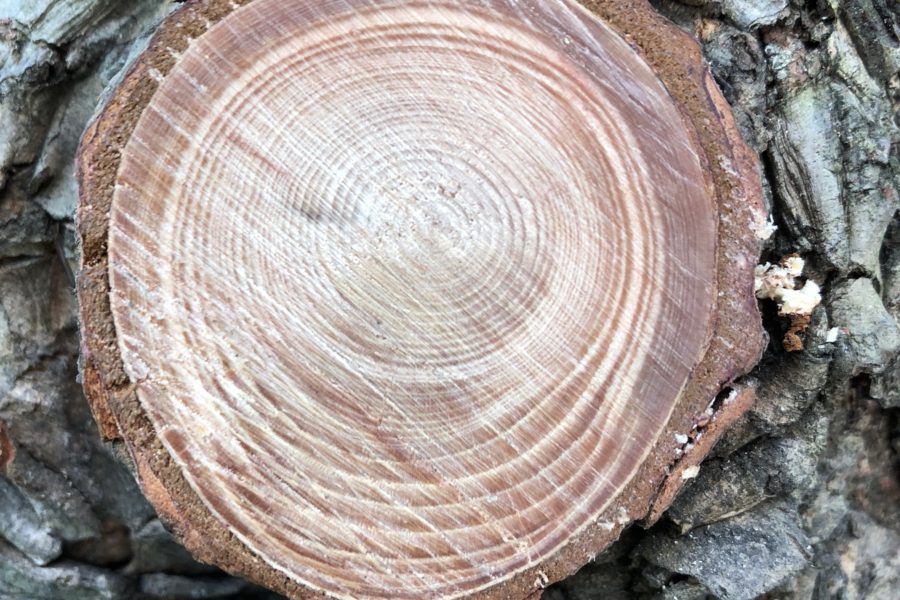Let’s attempt to define a pruning cycle as it pertains to tree management. A pruning cycle is the amount of time between each pruning dosage for an individual tree. Does that work? I characterize pruning cycles in three ways: low, medium and high frequency. What does this mean? A high frequency pruning cycle is a yearly dosage, or in some formal cases, two dosages of pruning treatment in one year (or in the case of bonsai, daily). It’s an issue of budget, health, structure, aesthetic and objective. A medium frequency cycle can be anywhere from 3-5 years, and a low frequency cycle we can assume is anything longer than five years. Of course, this is merely for discussion, and depending on the style of arboriculture you practice, these frequencies can vary with different philosophies.


Pruning for size and aesthetic, as we know, has its place on trees where space is limited (street trees, crowded residential sites, etc.). We may even consider these trees to be planted in the wrong place, but we choose to manage rather than remove, with the understanding that managing a healthy, maturing tree creates more value than a young tree just planted at a small fraction of the size. Large, healthy trees are more valuable. When also considering orcharding and practices like coppicing and pollarding (which is essentially another form of pruning for material harvest), we see examples of high-frequency pruning cycles on trees that aren’t necessarily crowded out by physical structures, but may still require size management. So then, in this sense high frequency pruning cycles can be prescribed when not only space and aesthetic is an issue, but also in the case of fruit/flower or scion wood production.


In another example, let’s consider corrective pruning (regenerative pruning) procedures that may be a heavy-dosage treatment in terms of the labor spent on one specific treatment, but a low frequency pruning cycle because of the need for that tree to regenerate naturally over the course of a few years. Better yet, this regenerative growth may likely have to be managed itself in order to maintain a product that is structurally sound and that the client is pleased with. Therefore, we have an example of the potential for a low or medium frequency cycle to eventually turn into a higher frequency cycle, or for an aesthetic objective to turn into a structural objective.
Deadwooding offers another example of a low frequency pruning cycle, if we’re dealing with a tree that is actively growing and not consistently losing live growth every year. Deadwood accumulates naturally, over longer periods of time as certain limbs die back either from a lack of light or other reasons like insects or disease. A large crown may only need to be visited every several years in order to manage deadwood accumulation.

And what about retrenchment of older, declinging trees? Retrenchment is an ongoing process that requires pruning cycles in order to manage a declining crown to vigorous, active points of growth. There is the consideration of risk as well as discovering a healthy, ‘lower crown’. Depending on the management plan, retrenchment pruning may call for low-to medium frequency pruning cycles much farther into the future than other situations in order to accomplish the objective.
How do different species of trees react to pruning frequency? I certainly think tree species plays a monumental role in pruning cycle frequency. This brings us back to the issue of space/planting placement as well. A vigorous species with large size potential can be managed with high pruning cycle frequencies in order to maintain size and vigor. Consider that ancient, formal art of pollarding, or a one hundred and fifty year old bonsai. Some species can handle higher frequencies better than others. Slow growing tree species can be managed differently from fast growing species, and in some instances that characteristic of tree vigor will be reflected in the pruning cycle frequency.
In order to establish a relationship between the pruning cycle and cost, it is critical to pruning dosage at each individual treatment. This is obviously because of the incredible diversity arborists face dealing with trees in their particular environments. Large, hazardous deadwood operations could cost as much as ten or more pruning cycles of a smaller tree because of the time spent on each individual dosage. It is important, then, to consider both the dosage and the pruning cycle when we are trying to monetize a tree management plan that’s based mainly on pruning cycle schedule.



I think that the concept of pruning cycles is a powerful way to conceptualize longterm tree maintenance for tree owners and tree managers. We know that many tree owners have a budget. Instead of thinking about budget as a limiting factor, we can look at that budget as an outline for how to manage trees our clients trees into the future. By combining pruning dosage and pruning cycle into an artistic plan that fits our clients budget, arborists can better prune for profit, maintain stronger pruning portfolios and have clients enjoy their investments at work.





Leave a Reply
Your email is safe with us.